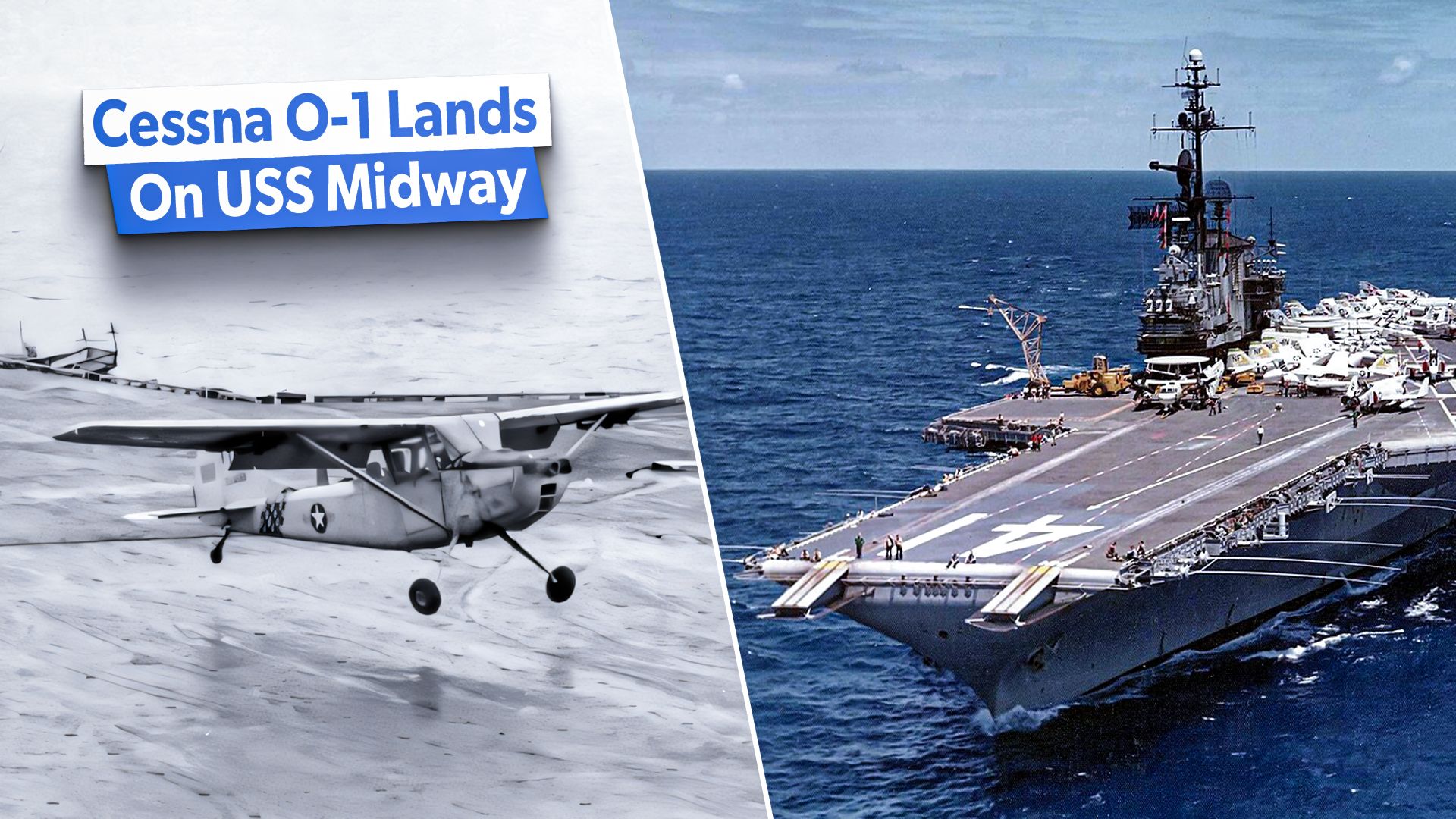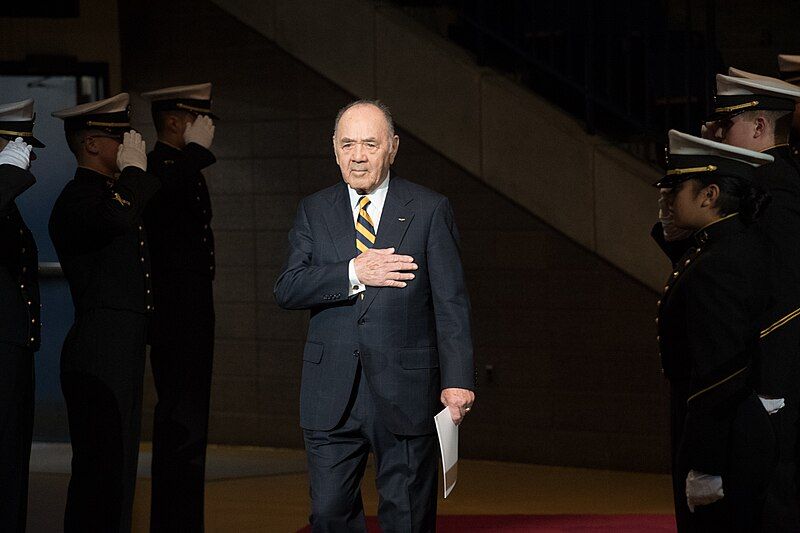Some of the most enduring images of the end of the Vietnam War are those of freedom-living South Vietnamese fleeing the pending tyranny, such as the crowds boarding the last Bell helicopter to leave the US Embassy in Saigon (now known as Ho Chi Minh City) and the Vietnamese boat people (Thuyền nhân Việt Nam).
One daring South Vietnamese Air Force pilot (officially the Republic of Vietnam Air Force [RVNAF; Không lực Việt Nam Cộng hòa/KLVNCH]) wasn’t content to cram himself and his family into either that helicopter or one of those rickety boats. Instead, he “borrowed” (read: hot-wired and stole) a fixed-wing military aircraft and landed it on a US Navy aircraft carrier. Simple Flying now shares the amazing story of Major (Thiếu tá) Buang-Ly.
The Cessna O-1E plane
“Oh the O-1E go flyin’
Along the mountain track
Across the jungle, across the shore
And some just don’t come back”
–“O-1E” by Irv Levine, Major, USAF (Ret.)
The good Major conveniently acquired a Cessna O-1 Bird Dog for his (and his family’s) daring flight to freedom. The plane made its maiden flight on December 14, 1949, and entered service in 1950 as the L-19 in the Korean War. According to the Charlie Company Vietnam website, the Bird Dog made aviation history as the first all-metal fixed-wing aircraft ordered for and by the US Army after establishing the US Air Force (USAF) as a separate and independent branch of service on September 18, 1947. In addition to the US Army and USAF, the Bird Dog served with the US Marine Corps (USMC) and 19 foreign countries.
During the Vietnam War, the Bird Dog was used primarily for reconnaissance, target acquisition, artillery adjustment, radio relay, convoy escort, and the forward air control (FAC) of tactical aircraft, including bombers operating in a tactical role.
A total of 3,431 O-1s were produced between 1950 and 1959.
The USS Midway aircraft carrier
The aircraft carrier upon which Maj. Buang-Ly landed was the USS Midway (CVB/CVA/CV-41), which was the longest-serving aircraft carrier in the 20th century, faithfully serving from 1946 to 1992. Commissioned on September 10, 1945, this “flattop” was the largest warship in the world until 1955, with a displacement of 45,000 tons and a hull length of 1,001 ft (305 m).
A close personal friend of mine, Russell King, a retired US Naval Reserve (USNR) Lieutenant Commander, served aboard the Midway from 1979 to 1982 and had this to say about the proud warship:
“I served on the USS Midway (CV-41), which was active for more years than most others, and was probably the most forward deployed carrier of the Cold War, with the best-trained pilots. She’s also the ‘moneymaker,’ when you consider her status as a museum ship.”
The intrepid escape
On that red-letter day of April 29, 1975 (the day before the Communist takeover became official), the US was smack-dab in the middle of Operation Frequent Wind, the mass helicopter evacuation of some 7,000 Americans and “at risk” South Vietnamese. It was the largest helicopter and humanitarian evacuation in US military history.
Buang-Ly hot-wired a Cessna O-1 Bird Dog, eager to safely get his family out of Vietnam. Buang-Ly, his wife, and their five young children squeezed inside the small aircraft. He flew toward the South China Sea, hoping to find Task Force 76 of the US fleet. Surviving shots fired at his aircraft and running low on fuel, the South Vietnamese pilot managed an incredible landing on the USS Midway. There was no retention system in place to keep him from rolling right off the busiest airstrip at sea. It was definitely an impressive demonstration of his piloting skills. But it wasn’t an easy feat.
The aircraft carrier’s deck was crowded by helicopters evacuating others. To alert the ship of his plans to land, Buang-Ly wrote a message on a scrap of paper and released it during a slow pass over the deck. However, the wind blew his message away. Desperate to land and wanting to ensure he wasn’t perceived as a threat, Buang-Ly ultimately dropped a leather pistol holster with a message inside imploring for help for his family and asking for the helicopters to be moved so he could have a clear runway.
The Midway’s skipper, then-Captain Lawrence Cleveland “Larry” Chambers (born June 10, 1929; the first African American to command a USN aircraft carrier), made the bold decision to order helicopters pushed overboard to make room for the RNVAF Major’s Bird Dog. Capt. Chambers was concerned that his decision would result in a court-martial but did it anyway.
In the words of Vern Jumper, the air boss on the USS Midway responsible for all flight operations:
“We pushed over the side four Huey helicopters and one Chinook,” Jumper said. “He made a couple of low passes just looking at the deck and on his third pass he made a beautiful carrier landing.”
All’s well that ends well
Fortunately, Captain Chambers wasn’t court-martialed for his life-saving decision. Instead, he became the first African-American graduate of the US Naval Academy to reach flag rank, retiring in 1984 with the richly deserved rank of Rear Admiral (RADM). As for Buang-Ly, in 2014, he and his family were presented with a replica model of his airplane at the Sun ’n Fun International Fly-In & Expo in Lakeland, Florida, in honor of his daring flight.
RADM Chambers referred to Buang-Ly as “[The] bravest man I have ever met in my life” and added:
“When a man has the courage to put his family in a plane and make a daring escape like that, you have to have the heart to let him in.”



